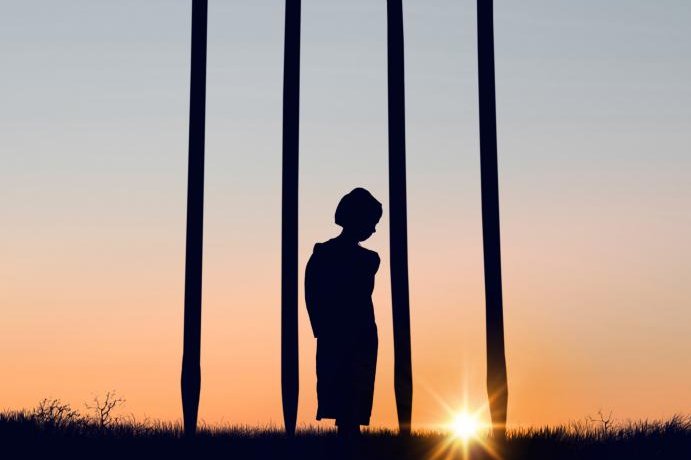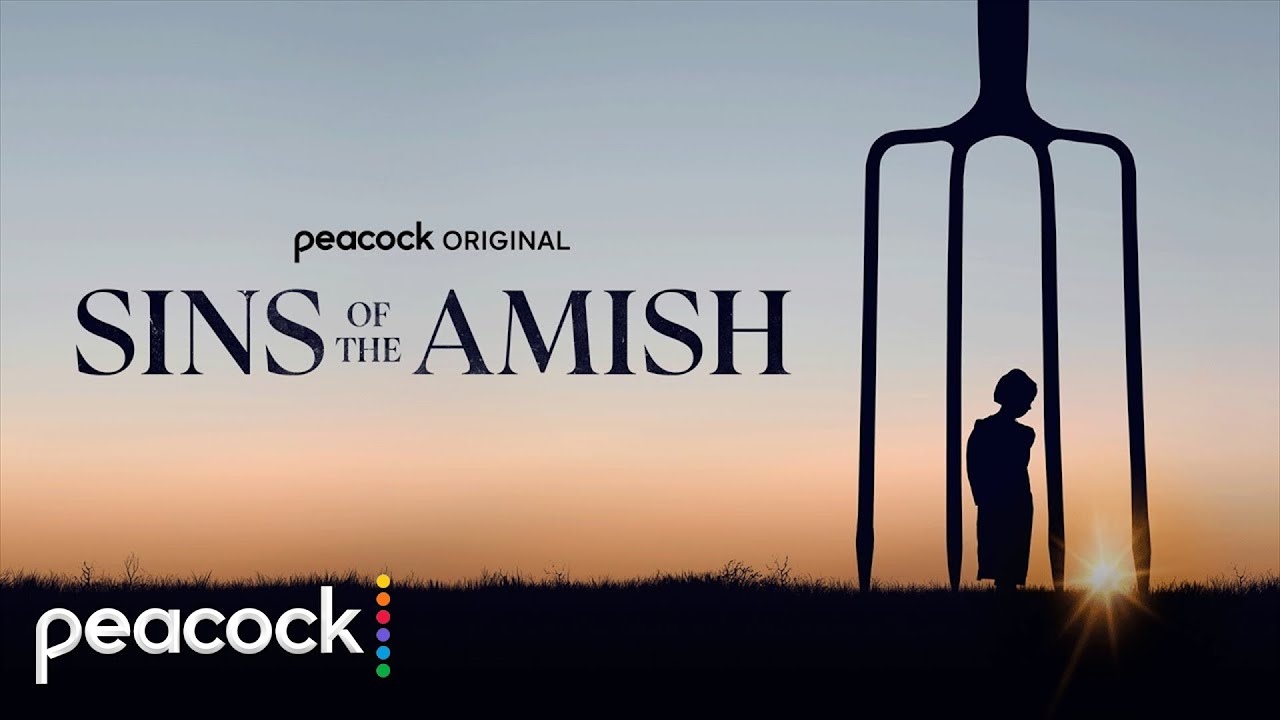I have written this on my blog before about the Amish culture, and I will again. Abuse can only exist in the dark shadows of silence and secrecy that shroud abuse in all cultures. However, the insular nature of Plain communities makes the silence so thick, it becomes nearly impenetrable. This makes it dauntingly difficult for a child or a mother to reach into the “outside world” to get the help they need. Yet breaking the silence is the first step toward stopping the abuse.
Sins of the Amish is a two-part documentary that tells the stories of a group of brave women who are seeking justice for the horrible atrocities they witnessed while members of the Amish and Mennonite communities.
This past Thursday, May 24, a film series was released on Peacock TV called Sins of the Amish that portray several women’s and children’s survivor stories who grew up or lived among the Plain People. The remarkable strength and power of the women who are portrayed in the film is palpable. They had to overcome so much to speak out and report the abuse they were enduring–in at least two cases, they risked their lives–and yet they did it. Now they have banded together for this film to raise awareness of the systemic problem of abuse among the Plain People.
These films are not for the faint-hearted. The stories are both heartbreaking and soul-wrenching. I found myself crying through most of it, even the second time through. Yet the strength of these women is uplifting and gives me hope. I love the metaphor that Meg in the film used when she said about the group of advocates they have become. “We’re like the crack in the dam. But when that flood comes, justice has to follow.”
As far as I know, Mary Byler was the first Amish person to report sexual abuse to the authorities. She is truly a pioneer who opened the door for others to walk through. Years ago, I read her story in Legal Affairs that was published in 2005. I remember thinking about how gutsy she had to be to do that. I didn’t publish my story with sexual abuse in it for another six years. It was hard to write about it, but it couldn’t have been as hard as it was for Mary to sit with only two advocates in the courtroom while busloads of Amish were brought in to support her perpetrator.
The systemic problems that prevent Amish victims from getting the help they need come not only from inside the culture, but also from those in law enforcement who hold the Amish culture up as an model of a good society. In some cases, local police do not believe the victims when they report abuse. In other cases like Mary’s, investigators do the right thing, but judges hand down lenient sentences, allowing the perpetrators back to their normal lives where the close-knit nature of their communities put all their children at risk.
Another person in the film is Misty Griffin, author of Tears of the Silenced. After watching the film, I stayed up all night to read her book. I do not know why I waited so long to read her powerful story, except as a means of protecting myself emotionally. I had read an excerpt on Amazon a few years ago, and I couldn’t bear the extreme abuse she and her sister endured at the hands of their mother and their stepfather high in the mountains of Washington State. When her father sensed that she was beginning to rebel at eighteen years old, he shipped them both off to a conservative Amish community where Misty’s sister stayed and married, while Misty left after she was abused by the church bishop.
I was struck with one realization after watching the films. I always intuited that the problem of abuse of every kind is widespread among the Amish and Plain People. But I never really knew for sure just how widespread it is. After seeing these films, there is no doubt in my mind that it is as pervasive as I originally thought. Judge Reinaker from Lancaster, Pennsylvania clearly stated that abuse is more prevalent among the Amish than in the mainstream culture.
Jasper, one of the women in the film, made a good point about Amish and Mennonite culture. She said, “It is so heavily promoted to physically break the will of a child. If you look at it that way, their entire religion is rooted in abuse.”
Jasper’s statement is right on. The culture that is known for being peaceful and nonviolent is actually using horrific forms of violence against the most vulnerable among them–their own children–in the name of discipline. This then, gets perpetuated from one generation to the next. And the cycle goes on. And on. And on. Until someone finally breaks it.
I am so glad I left my community because I could easily have become part of perpetuating this cycle. The other day, David and I were trying to imagine scenarios of what direction my life would have taken had I stayed among the Amish. Had I stayed single, I would have become the person expected to take care of other family members, as Amish single women do. Had I married and had a string of children, I would have felt frustrated and overwhelmed with responsibilities. Without a way to heal from the abuses of my own childhood, I would likely have lashed out at my children. Essentially, I would have turned into my mother.
This is what I always come back to. Without a proper education, what choices do Amish children have? They don’t come in contact with those in the outside world who may notice signs of abuse, and they are taught never to reveal Amish ways to “outsiders.” This cuts off any avenue to getting help. Children at the age of thirteen or fourteen are just too young to fend for themselves in the outside world, so leaving becomes impossible. At sixteen or eighteen, they have a much better chance of surviving on their own.
Furthermore, how can Amish children develop the gifts and talents with which they are bequeathed if those don’t happen to fit within the confines of their culture? If the Amish were to support education beyond the eighth grade, they would be giving their children more of a choice about whether to stay or go. Those who choose to stay would be more committed to the Amish ways. Both those who stay and those who leave would have the chance of discovering what life they are meant to live.
Amish leaders know all this. That is why they will not allow education beyond the eighth grade, even though this practice is not part of the Ordnung, or church rules. Of all the Amish customs and traditions, the limiting of education and the determination to break the will of the child are the cruelest and most harmful. Between these two, Amish children have only a slim chance of breaking out of an abusive situation or choosing the direction their lives will take.
Yes, it has been done, and those of us who have done it are living proof of that. But for every one of us who breaks away, how many more stay and either endure abuse their whole lives long, or become abusers themselves, or both?
Each of the women in Sins of the Amish provide us with the power of a good example of what is possible beyond the Plain cultures in which we grew up. May those of you in Plain communities who are in an abusive or oppressed situation, know that you are not alone. I have this to say to you:
If you are experiencing abuse or its aftermath, know there is help on the other side of the phone line by trained professionals at the National Sexual Assault Hotline: 1-800-656-4673 or your local police by dialing 911. Breaking the silence is the first step toward stopping the abuse. It takes strength and courage to reach out for help. You have that courage, and you will find it. You also have the inner strength to carry you through the pain and to eventually transform it to make sure that it does not get transmitted to the next generation. In the process, you find yourself becoming who you are meant to be.




I don’t have Peacock so I’m not sure how to watch this- I did look at the trailer – is there another way??? I’m so proud of these women!!! You are absolutely right, until the abuse is brought to light it will NEVER stop. It feeds upon itself from one generation to the next. Thank you for making us aware of this film. I’m sure it was hard for you to watch, but remember you are as brave as they are- you fought back but writing your books and have helped make the public aware of these horrible secrets that are kept with in the Amish community. It has to start somewhere and it has with you and these brave women- everyone of you are planting seeds of hope for the next generation.
Pamela, I don’t know of another way to view the films. I also didn’t have Peacock, but signed up for a month so that I could watch this one. I found it worth it. There are two in the series.
Thank you for your kind thoughts. I was asked back in 2020 to participate in the film, but at the time I had a new job and we were in the beginning of the pandemic, so I couldn’t figure out how to be in a film and be safe. I wish now that I had said yes and figured it out.
Yes, I agree, the awareness of the issues will help in those who feel stuck in a situation. IF they have access to the information. That is always the challenge within the Plain communities. It will also help raise awareness for those in law enforcement when someone comes to them to report abuse, and the judges who are handing down sentences when these cases land in the courts.
https://growingupamishmichigan.blogspot.com/2022/06/what-is-it-like-to-grow-up-amish.html